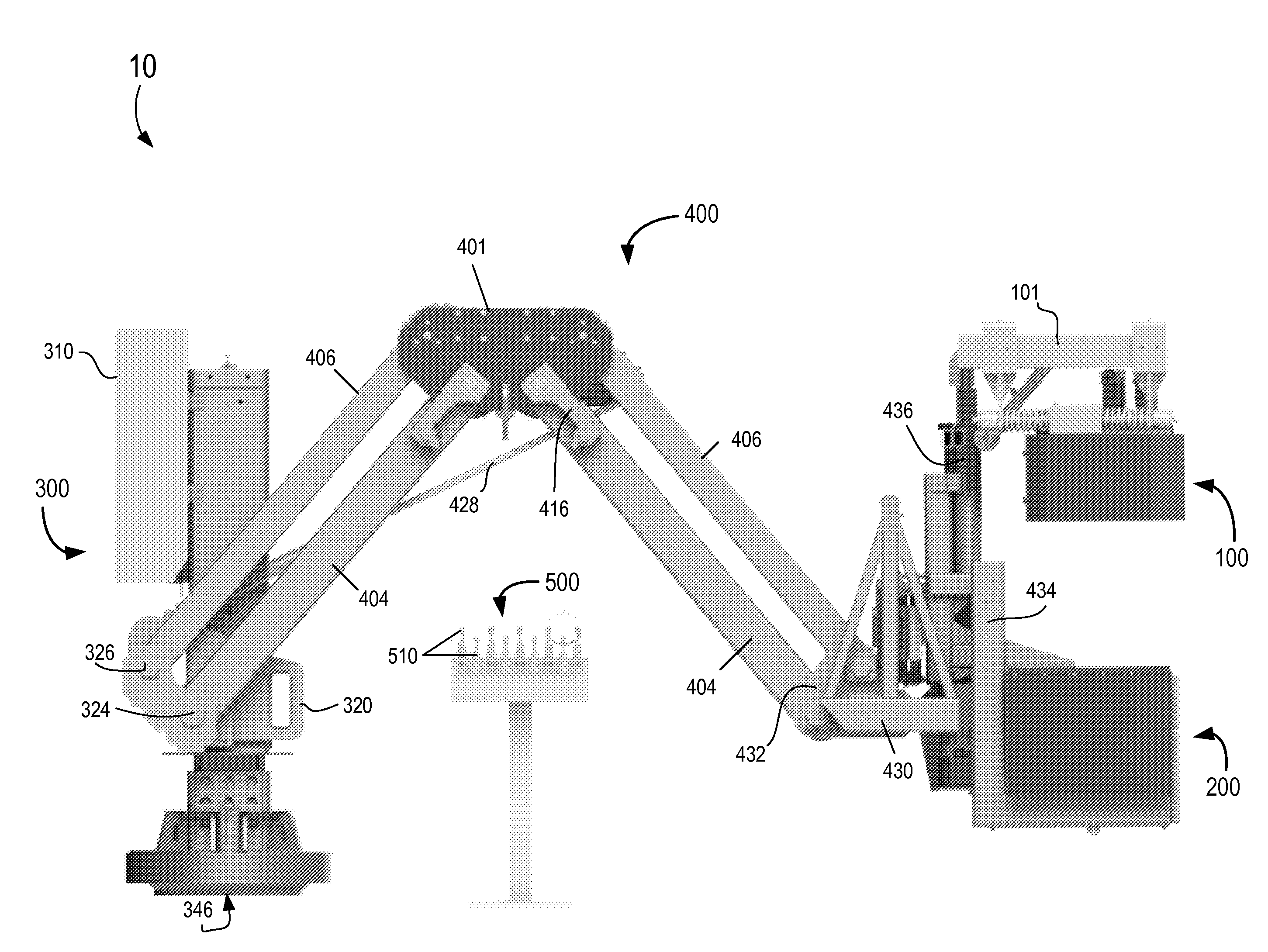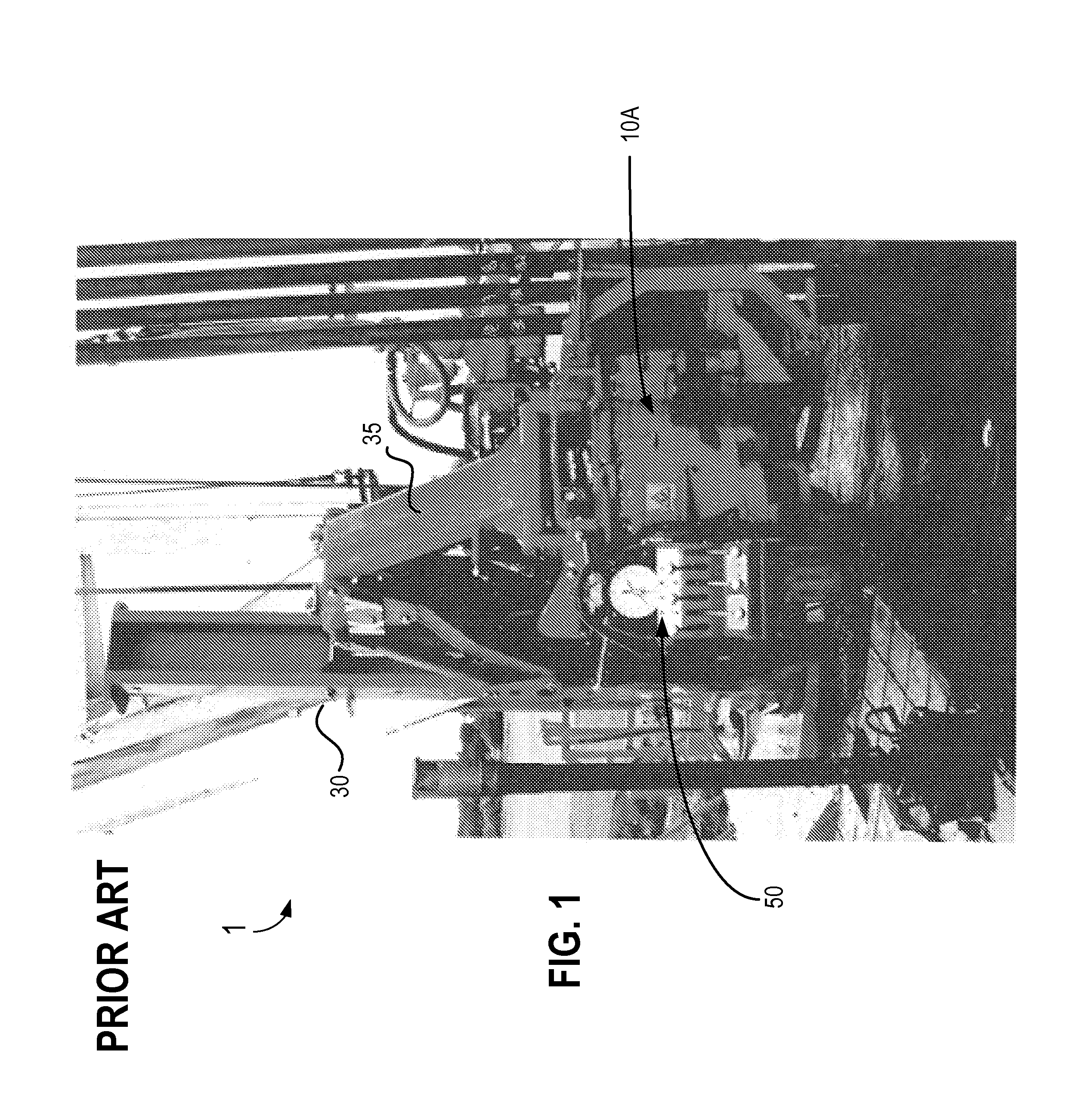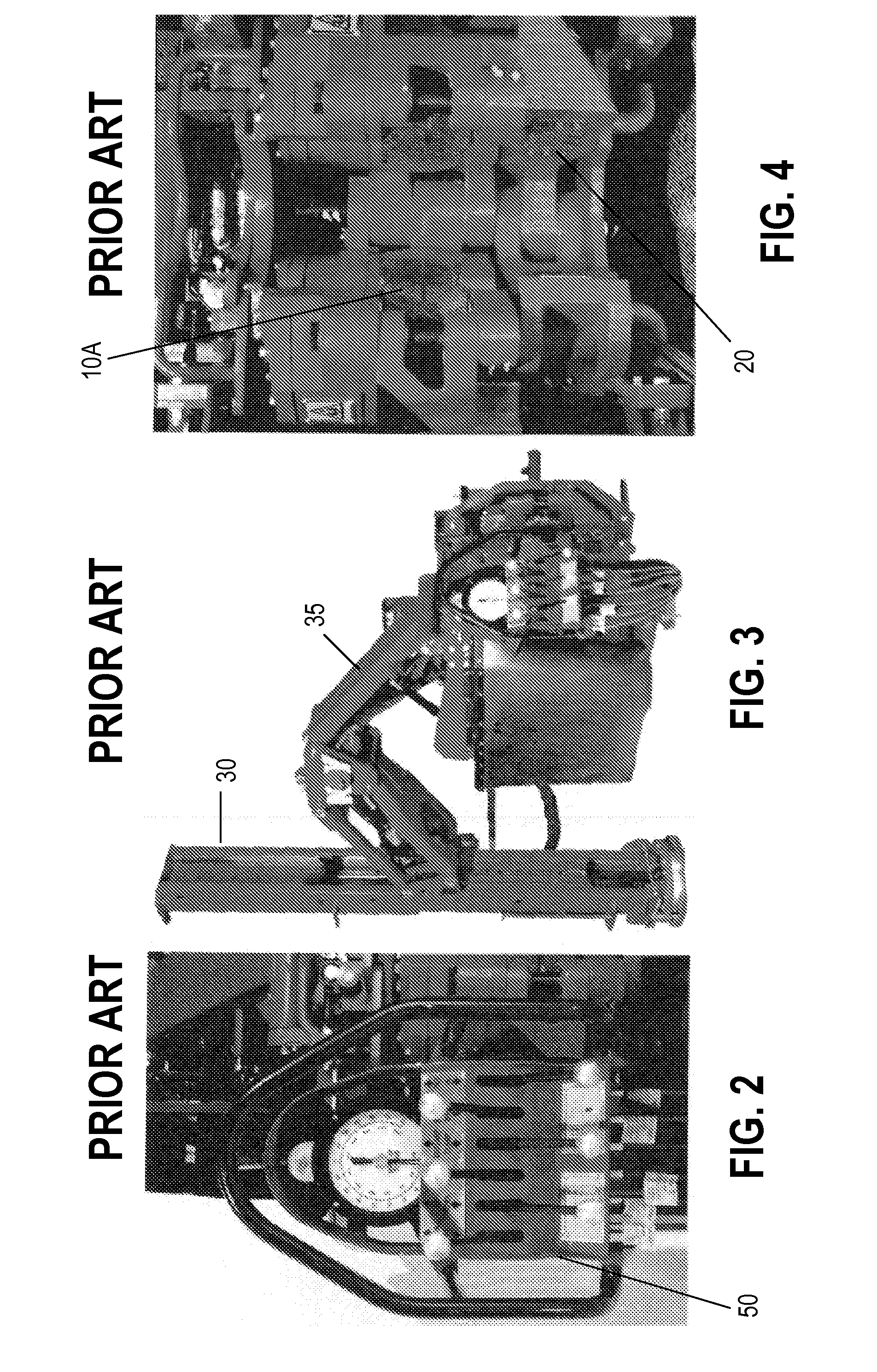Low maintenance iron roughneck system with replaceable modular components thereof
a modular component and low maintenance technology, applied in the direction of drilling rods, drilling casings, drilling pipes, etc., can solve the problems of multiple hazards for personnel, heavy equipment, and extremely dangerous drills on the drill floor
- Summary
- Abstract
- Description
- Claims
- Application Information
AI Technical Summary
Benefits of technology
Problems solved by technology
Method used
Image
Examples
Embodiment Construction
[0043]As to be described hereafter, an example embodiment is directed to a greaseless, automated, low maintenance iron roughneck system with detachable modular components thereof. The system utilizes a modular arrangement of spinner, torque and base modules with quick disconnects at modular interfaces to speed up servicing times. The use of double-sealed bearings and o-rings in modules of the system renders the system impervious to salt exposure and eliminates zerks that would necessitate greasing at regular intervals, thus eliminating extensive servicing downtime. The system employs hydraulic over hydraulic control interlock logic for improved safety, eliminating sparck, EMI & electrical issues, providing robust environment-tolerant interfaces and no Class 1 Div 1 constraints, with a remote operator control console pedestal provided outside the hazard zone to control the system, and operating on a DC battery.
[0044]FIG. 5 is a perspective view of a automated, low maintenance iron ro...
PUM
 Login to View More
Login to View More Abstract
Description
Claims
Application Information
 Login to View More
Login to View More - R&D
- Intellectual Property
- Life Sciences
- Materials
- Tech Scout
- Unparalleled Data Quality
- Higher Quality Content
- 60% Fewer Hallucinations
Browse by: Latest US Patents, China's latest patents, Technical Efficacy Thesaurus, Application Domain, Technology Topic, Popular Technical Reports.
© 2025 PatSnap. All rights reserved.Legal|Privacy policy|Modern Slavery Act Transparency Statement|Sitemap|About US| Contact US: help@patsnap.com



